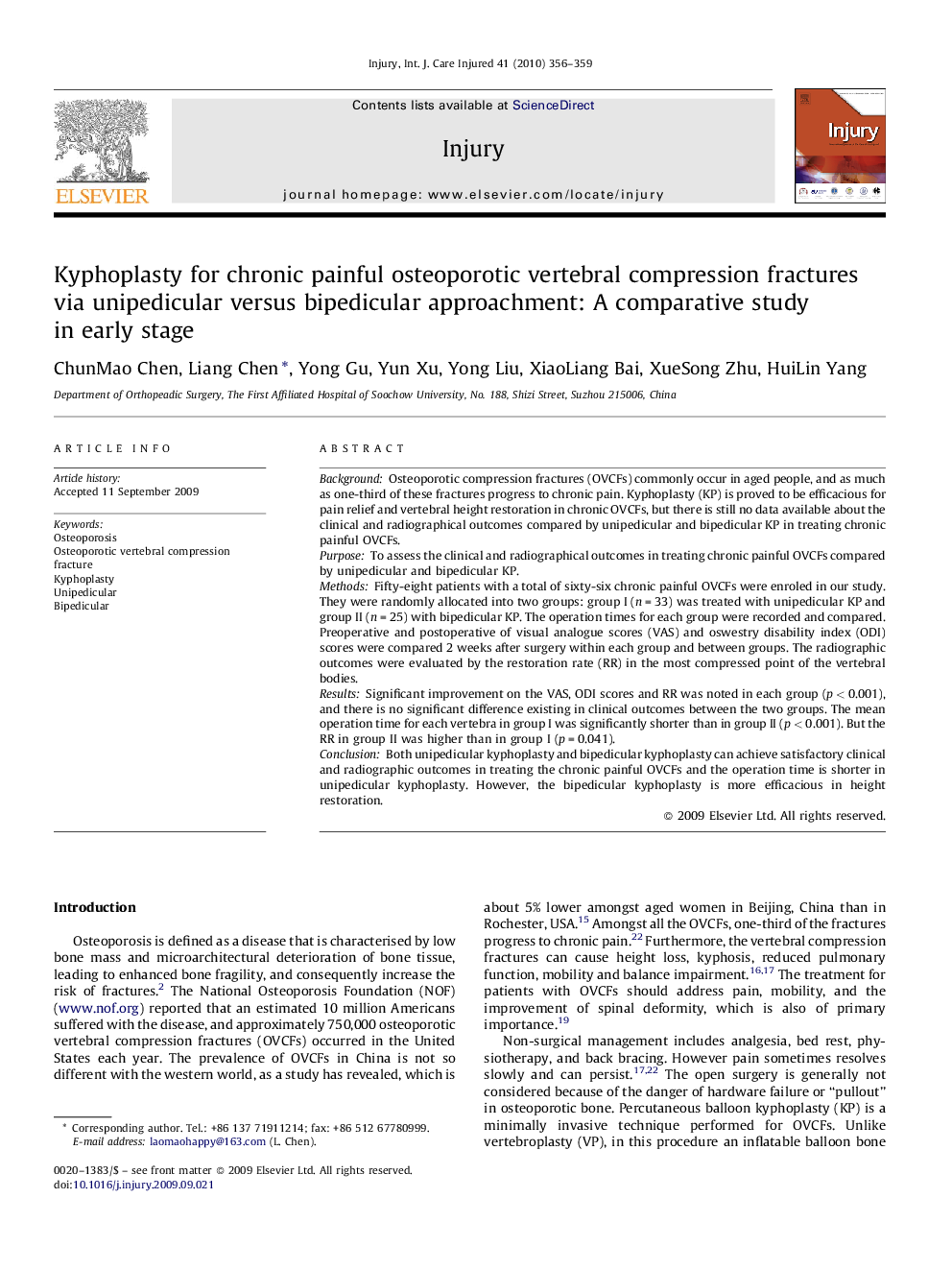| Article ID | Journal | Published Year | Pages | File Type |
|---|---|---|---|---|
| 3241136 | Injury | 2010 | 4 Pages |
BackgroundOsteoporotic compression fractures (OVCFs) commonly occur in aged people, and as much as one-third of these fractures progress to chronic pain. Kyphoplasty (KP) is proved to be efficacious for pain relief and vertebral height restoration in chronic OVCFs, but there is still no data available about the clinical and radiographical outcomes compared by unipedicular and bipedicular KP in treating chronic painful OVCFs.PurposeTo assess the clinical and radiographical outcomes in treating chronic painful OVCFs compared by unipedicular and bipedicular KP.MethodsFifty-eight patients with a total of sixty-six chronic painful OVCFs were enroled in our study. They were randomly allocated into two groups: group I (n = 33) was treated with unipedicular KP and group II (n = 25) with bipedicular KP. The operation times for each group were recorded and compared. Preoperative and postoperative of visual analogue scores (VAS) and oswestry disability index (ODI) scores were compared 2 weeks after surgery within each group and between groups. The radiographic outcomes were evaluated by the restoration rate (RR) in the most compressed point of the vertebral bodies.ResultsSignificant improvement on the VAS, ODI scores and RR was noted in each group (p < 0.001), and there is no significant difference existing in clinical outcomes between the two groups. The mean operation time for each vertebra in group I was significantly shorter than in group II (p < 0.001). But the RR in group II was higher than in group I (p = 0.041).ConclusionBoth unipedicular kyphoplasty and bipedicular kyphoplasty can achieve satisfactory clinical and radiographic outcomes in treating the chronic painful OVCFs and the operation time is shorter in unipedicular kyphoplasty. However, the bipedicular kyphoplasty is more efficacious in height restoration.
